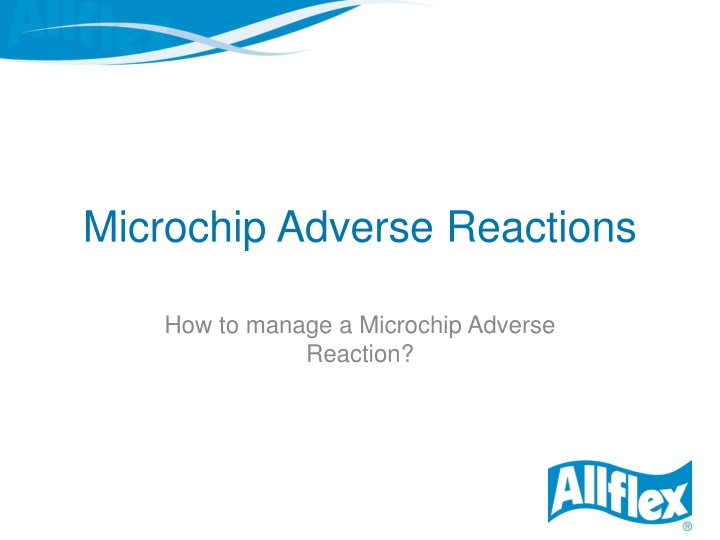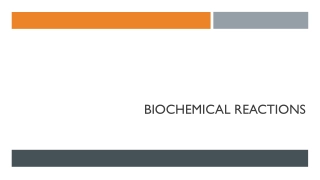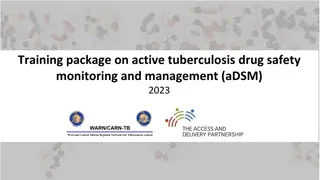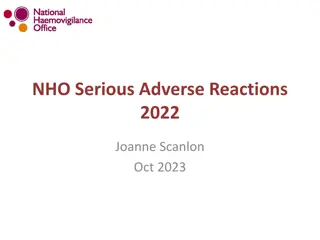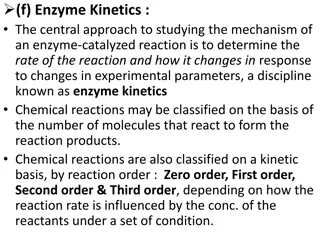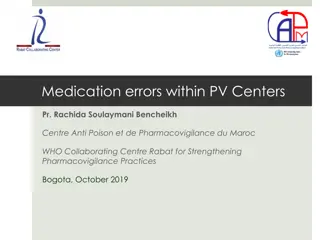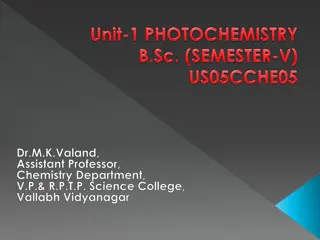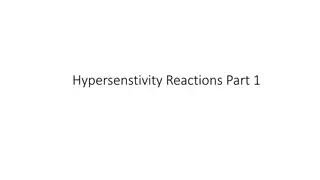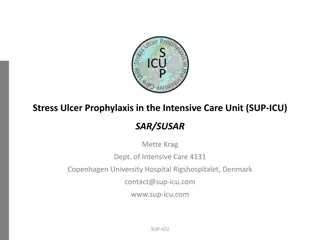Microchip Adverse Reactions
Addressing adverse reactions to microchips is crucial for pet owners and veterinarians. Understand the types of reactions, importance of reporting, and procedures to follow for both medical and commercial reasons. Learn how to support veterinarians, report adverse reactions, and handle cases of lack of expected efficacy. Stay informed to ensure the safety and satisfaction of pets and customers.
Download Presentation

Please find below an Image/Link to download the presentation.
The content on the website is provided AS IS for your information and personal use only. It may not be sold, licensed, or shared on other websites without obtaining consent from the author.If you encounter any issues during the download, it is possible that the publisher has removed the file from their server.
You are allowed to download the files provided on this website for personal or commercial use, subject to the condition that they are used lawfully. All files are the property of their respective owners.
The content on the website is provided AS IS for your information and personal use only. It may not be sold, licensed, or shared on other websites without obtaining consent from the author.
E N D
Presentation Transcript
Microchip Adverse Reactions How to manage a Microchip Adverse Reaction?
Microchip Adverse Reactions Report The current situation Completely different from Veterinary Drugs No regulation related to the follow-up of Microchip Adverse Reaction, since there is no registration required: A microchip is NOT a medical device The reporting of Adverse Reaction only depends on the own voluntee of either the veterinary associations or the manufacturers UK: BSAVA Implementation of a Code of Good Practice
Two kinds of adverse reactions can be encountered 1. Adverse reactions following the microchipping Hair Loss Swelling Inflammation Migration Tumor 2. Lack of expected efficacy Cannot be read
1. Why reporting a Microchip Adverse Reaction is important? Medical issue It allows the manufacturer to collect the data and get feedbacks on any defectiveness (product improvement) Commercial issue Managing complaints is part of managing the satisfaction of our customers Helping our client to keep their clients loyal is key X-Ray of the left-side of the thorax Detection of a microchip found in the left lung lobe
1. Adverse reaction following the microchipping - Procedure Report of the microchip adverse reaction 1 The objective: To support the veterinarian in managing the complaint of the pet owner Fill in the Materiovigilance Report 2 Letter adressed to the vet 6 Get the ID number and/or the implant* (to be sent to Allflex HDQ) 3 The following data are gathered: - Certificate of analysis/sterilization - Scientific publications 5 Send to Allflex HDQ the Materiovigilance Report filled in 4 * Allflex does not recommend to remove any defective microchip
2. Lack of expected efficacy - Procedure Cannot be read 1. Advice the vet to follow the Scanning procedure (please see the slide n 7) 2. Procedure 1. Advice the vet to perform an X-ray 2. If the microchip is not found Microchip the animal and control that the chip has been properly injected 3. If the microchip is found Re-chip the animal
Microchip Scanning Procedure, BSAVA Guidelines SCAN Chip found in normal position Microchip not found Scan the whole body slowly paying attention to axilla, elbow and shoulder Microchip found = migration Microchip not found Check the scanner against equivalent type working chip Inform the supplier Use a different scanner Inform the supplier Microchip not found = lost* Perform an X-ray Microchip found = failed * It might happen that the microchip has never been injected
